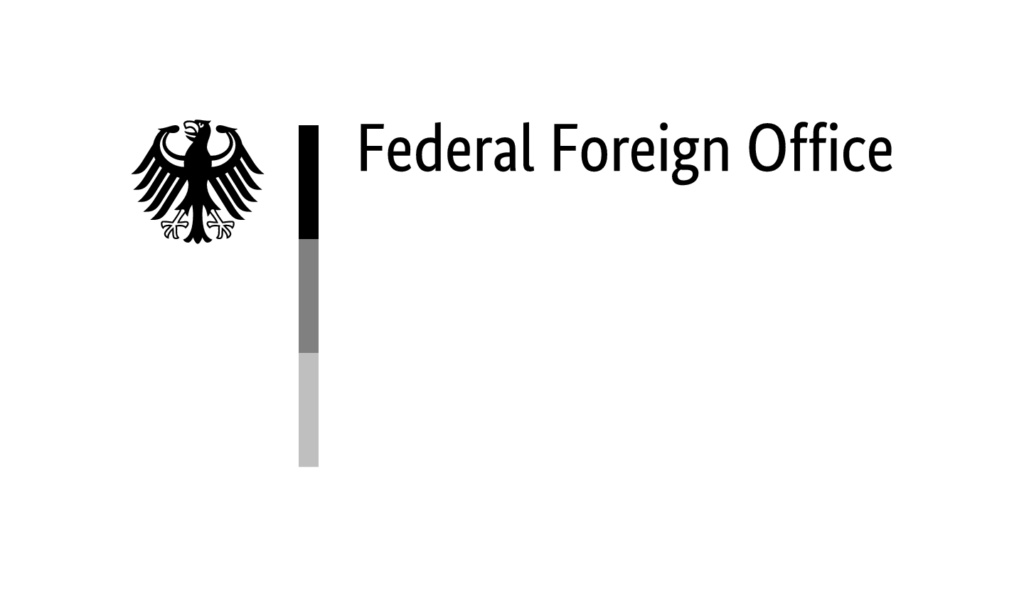Demonstration for the establishment of the Memorial to the Sinti and Roma of Europe Murdered under the National Socialist Regime, November 2003; photo: Documentation and Cultural Centre of German Sinti and Roma.
The Memorial to the Sinti and Roma of Europe Murdered under the National Socialist Regime
An initiative of the Central Council of German Sinti and Roma for a joint memorial to all victims of the Nazi genocide was not successful. At the end of 1992, the political representatives of the Sinti and Roma and of the Jews in Germany agreed that there should be separate places of commemoration for Sinti and Roma and for Jews in Berlin.
In 1994, the Berlin Senate proposed a site for the memorial in the Tiergarten between the Reichstag building and the Brandenburg Gate. However, construction of the memorial was delayed for years due to political disagreements. It is thanks to the persistent engagement of the Central Council of German Sinti and Roma that the memorial was finally inaugurated in October 2012, 20 years after its political approval of the federal government. The ceremony took place in the presence of Chancellor Angela Merkel and Federal President Joachim Gauck. Internationally renowned artist Dani Karavan had designed the monument. The inscription on the monument is a poem called “Auschwitz”, written by Santino Spinelli, who is a member of the minority. The centre-point of the monument is formed by a circular “lake of remembrance”, in the middle of which stands a granite stone on which a fresh flower is laid every day. In addition, panels provide information about the marginalisation and mass murder of the minority during the Nazi reign of terror.
The monument is a reminder of the genocide of the Sinti and Roma and is intended to grant belated recognition to the few remaining survivors of the Holocaust. At the same time, it is a symbolic declaration of the special historical responsibility of politics and society towards the 12 million Sinti and Roma living in Europe today.
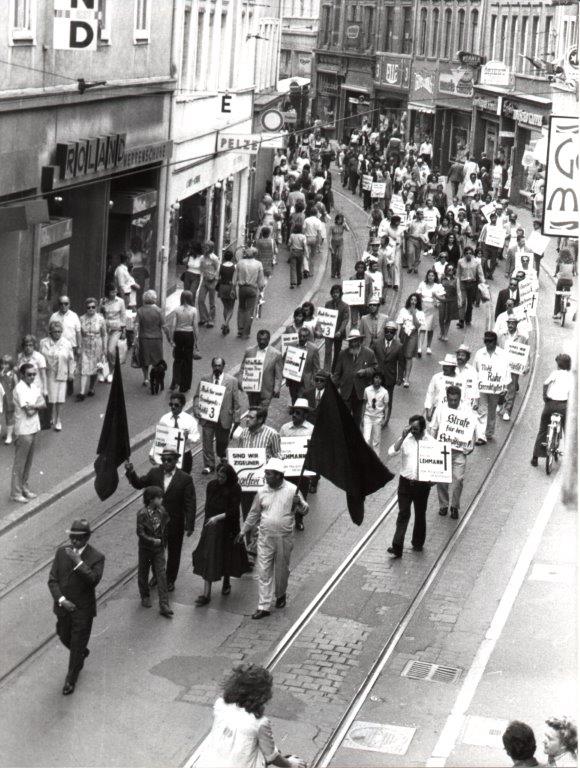
The early days of civil rights work of German Sinti and Roma
Exhibition “The long path to recognition of the Roma and Sinti Holocaust”
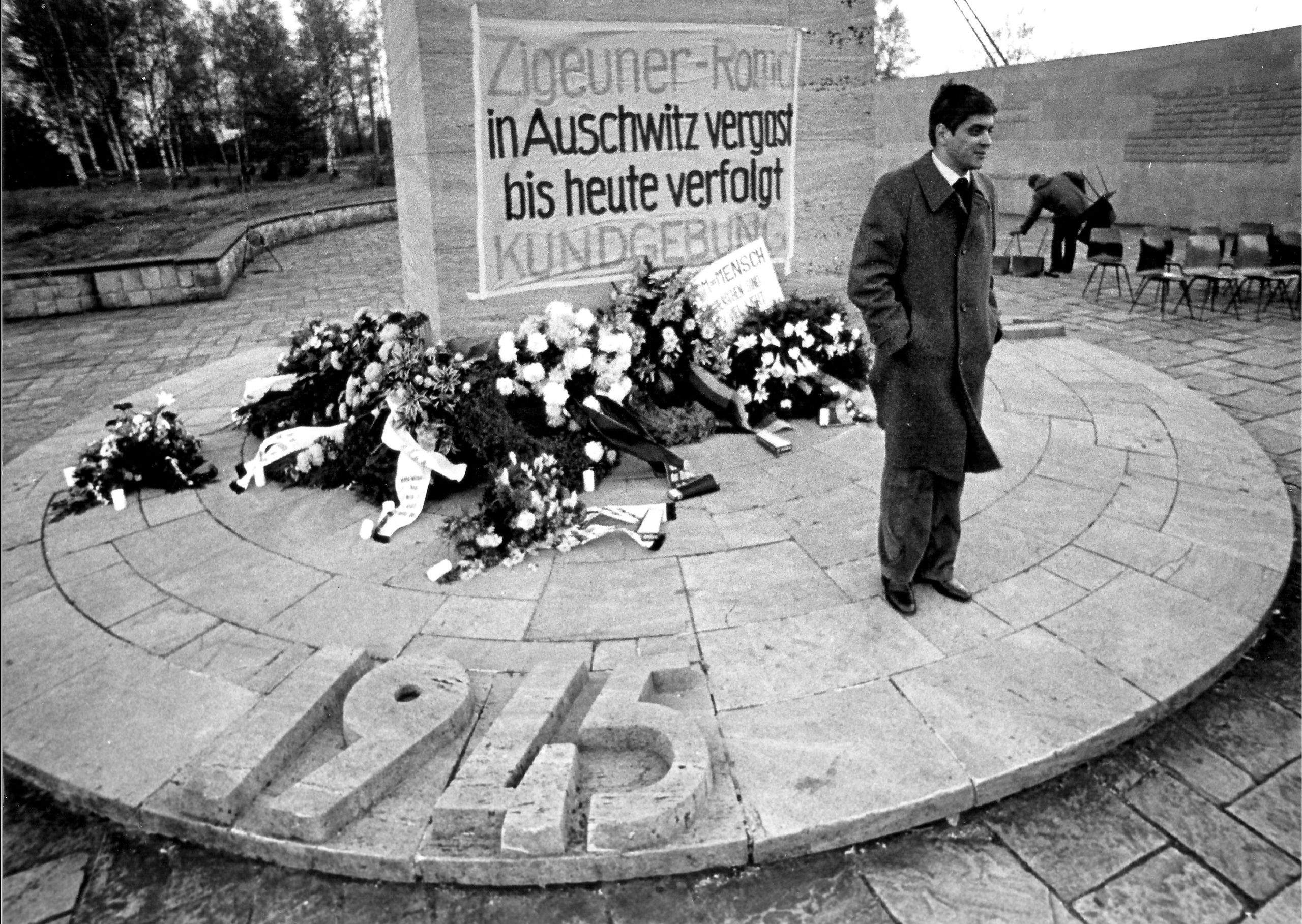
First public civil rights campaign against racism
Exhibition “The long path to recognition of the Roma and Sinti Holocaust”

The hunger strike at the former concentration camp in Dachau
Exhibition “The long path to recognition of the Roma and Sinti Holocaust”
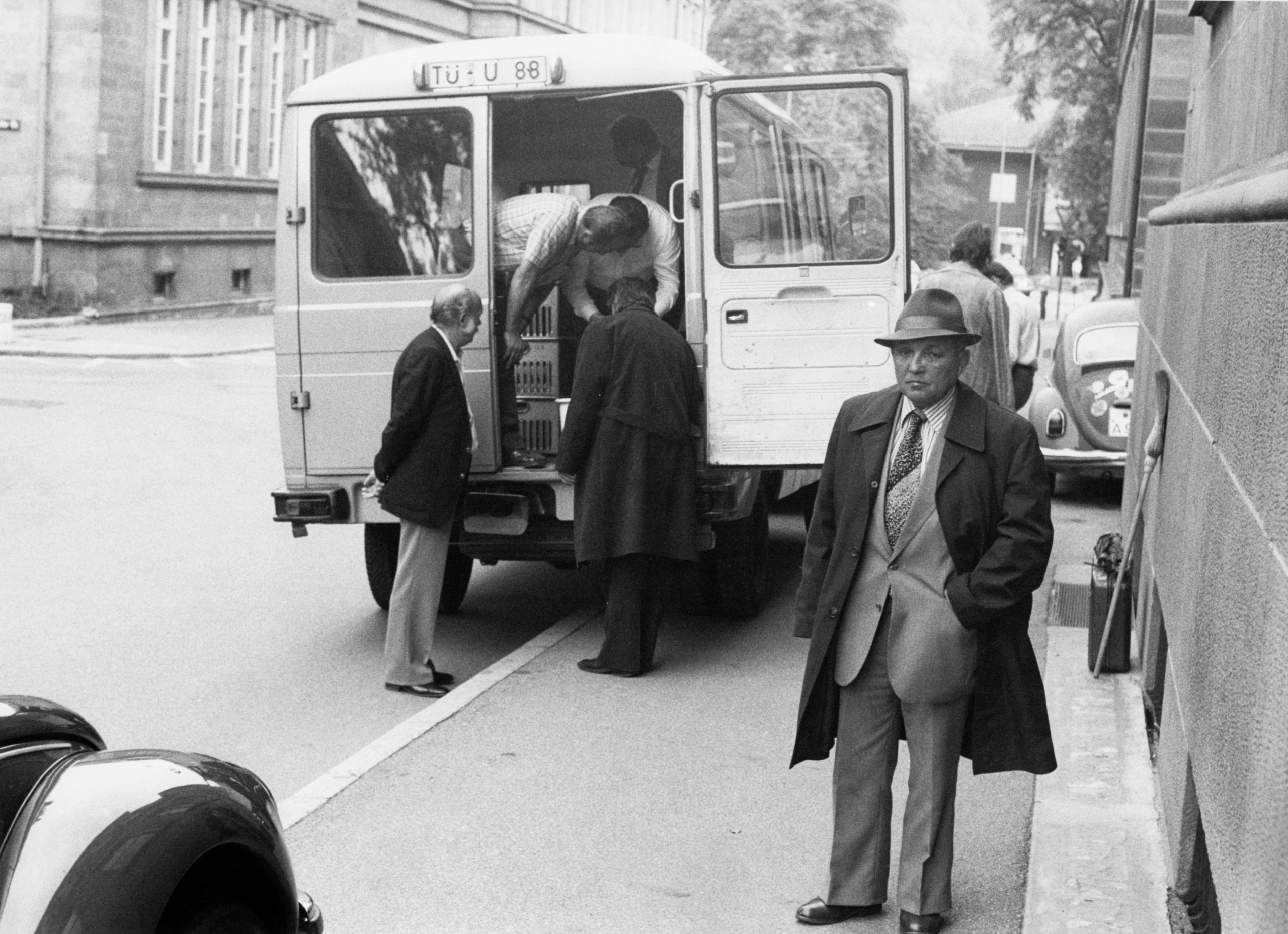
The search for the Nazi race files
Exhibition “The long path to recognition of the Roma and Sinti Holocaust”

The recognition of the Nazi genocide of the Sinti and Roma
Exhibition “The long path to recognition of the Roma and Sinti Holocaust”

Protests against special registration by the police
Exhibition “The long path to recognition of the Roma and Sinti Holocaust”
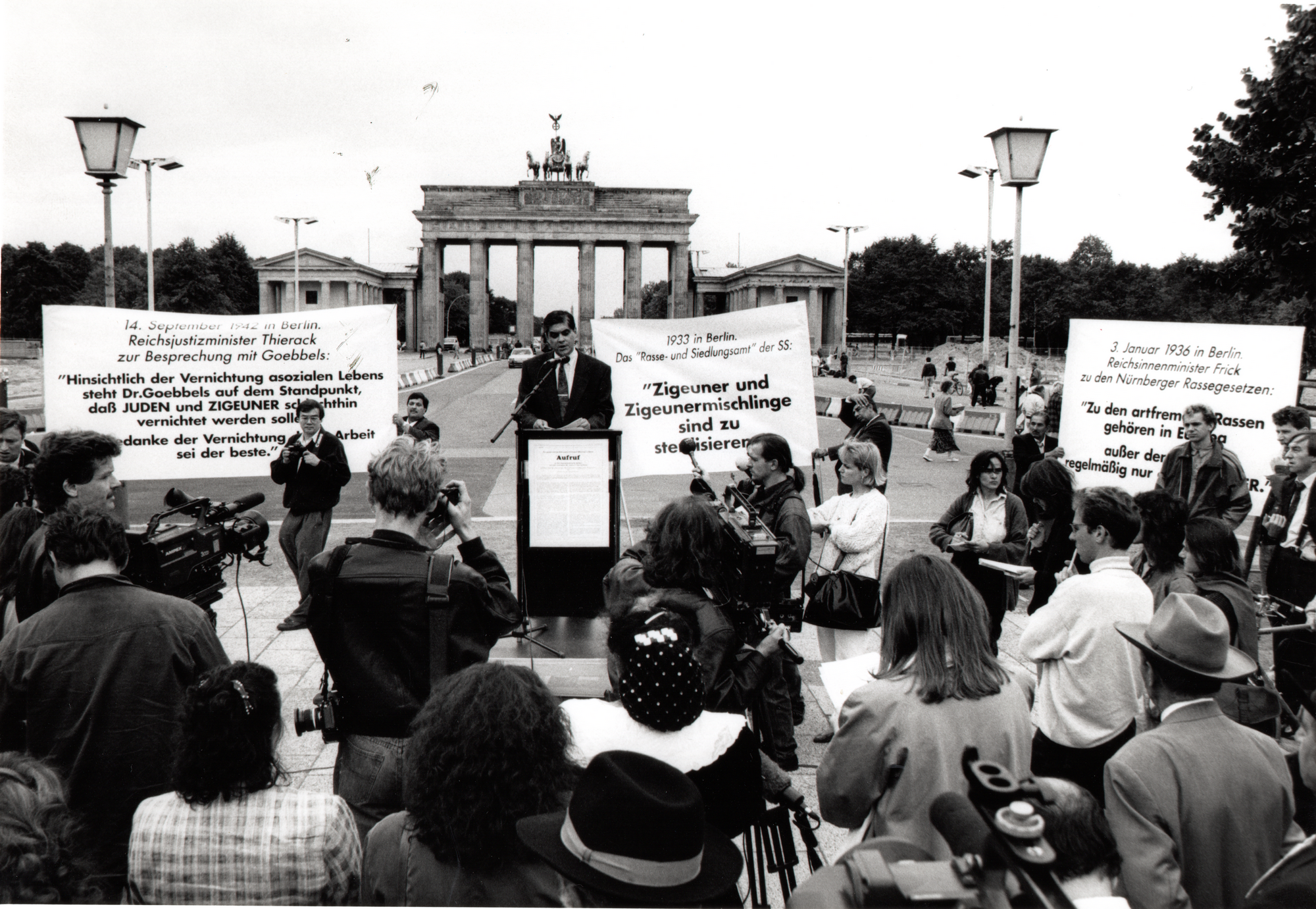
No appropriate compensation for Sinti and Roma persecuted by the Nazi regime
Exhibition “The long path to recognition of the Roma and Sinti Holocaust”

Remembrance in Auschwitz
Exhibition “The long path to recognition of the Roma and Sinti Holocaust”

The world’s first permanent exhibition on the Nazi genocide of the Sinti and Roma
Exhibition “The long path to recognition of the Roma and Sinti Holocaust”

Clemency for the murderers – the Judiciary reviews Nazi crimes
Exhibition “The long path to recognition of the Roma and Sinti Holocaust”



